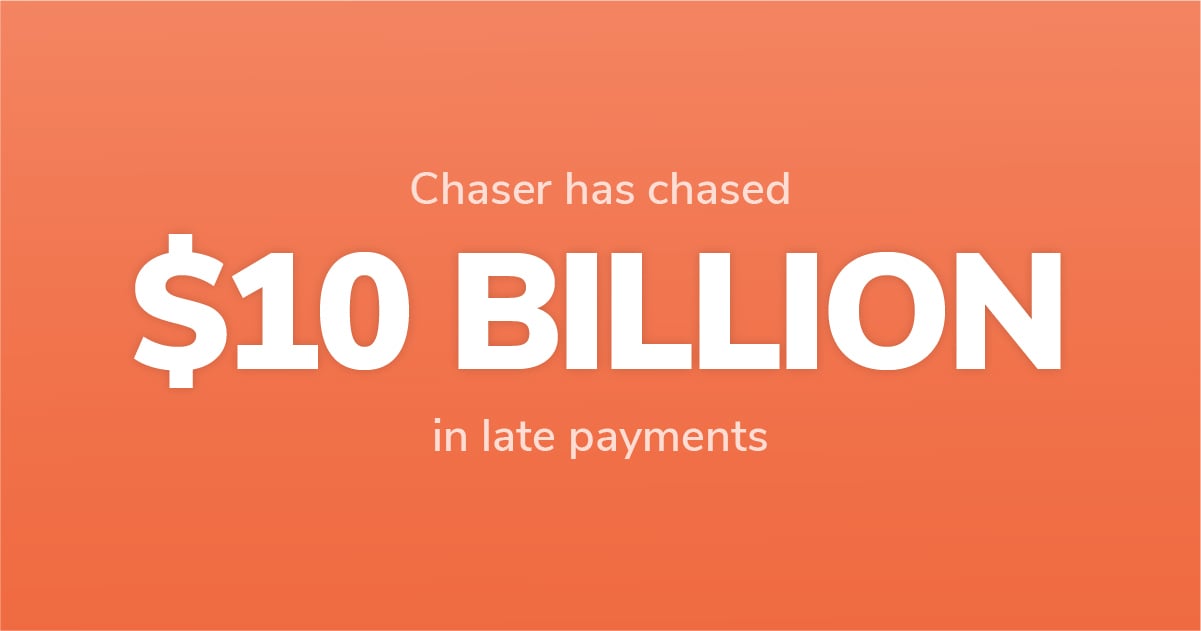In 2022, SMEs (small and medium enterprises) in the UK wrote off £5.8 billion in bad debt alone!
According to research by insurer Direct Line, 19% of SMEs have written off bad debt to the tune of £31,330 of unpaid bills, while 9% have written off debts in excess of a crushing £100,000.
This insight into the scale of bad debt being written off is supported by Bibby Financial Services (BFS) research, indicating that 27% of UK SMEs had written off bad debt in the preceding 12 months.
In 2023, UK government statistics showed that the levels of bad debt expenses had soared to 61% for UK SMEs, with an average write-off of £16,641 per business.
Bad debt is an issue that affects businesses of all sizes and can have a devastating impact on their cash flow and accounts receivable. Businesses need to understand what bad debt expense is, how it occurs and the potential consequences of not managing it well enough.
By employing the right strategies and processes, businesses can significantly reduce the amount of bad debts they have to write off.
If you're a business owner looking to reduce bad debts in your business, read on to learn more about what bad debt expense is, how it occurs, and four effective strategies you can use to reduce it.
What is bad debt?
Bad debt is a term that refers to money owed to a business by customers who have not paid their bills. This could be due to any number of reasons, such as bankruptcy, fraud or simply customers refusing to pay.
Bad debt is also known as uncollectible debt or accounts receivable that cannot be collected. When a business is unable to collect on its debts, it becomes 'bad' and must be written off as a loss in the company's accounts.
What is bad debt expense?
This article will also touch upon the idea of bad debts and bad debt expenses. Essentially, bad debt expense is how companies work out the cost of uncollectible accounts.
Bad debt happens when customers don't pay up, so a company will miss out on a lot of money. This can be from credit sales, outstanding accounts or anything else. The bottom line is that your balance sheet doesn't add up because of the bad debts.
A business can calculate or estimate the bad debt expense by applying the accounts receivable aging technique. This concept gets your accounts receivable and estimates how much of the balance you think will be collected. You apply this as a percentage and it helps you figure out the total bad debts for your business.
As an example, your total receivables are £20,000 but there's a chance 10% won't be collected. This means your total bad debts are estimated at £2,000 based on the accounts receivable aging technique.
How does bad debt occur?
There are many reasons why bad debt can occur in a business leading to a higher bad debt expense:
- Customers not paying their bills on time or at all
- Customers filing for bankruptcy
- Customers committing fraud, such as using stolen credit cards to purchase goods and services
- Errors made by the business when invoicing customers
- Poorly written contracts
While these are the most common reasons for bad debts, other factors can also contribute to it. For example, a business may be affected by a recession or other economic downturn, which affects its customers' ability to pay their bills.
Bad debt examples
To clarify the concept of bad debts, here are some examples that show how it can occur:
Example 1
Business A has a customer who purchases goods and services but then fails to pay the invoice. The customer has no intention of paying, and Business A is unable to recover the debt, meaning it must be written off as bad debts.
Example 2
Business B has a customer who purchases goods and services on credit. But due to unforeseen circumstances, which are out of their control, they are unable to pay their bill. As this customer has no intention of paying the debt, Business B must write off the debt as bad debt through credit sales.
Example 3
Business C has a customer who purchases goods and services on credit but then files for bankruptcy. The business is unable to recover any of the money owed, so it must be written off as bad debt.
The fallout of bad debt
Bad debts have the potential to seriously affect a business's cash flow and profitability. As bad debts accumulate, this can lead to reduced profits, which in turn can lead to a decreased ability to pay suppliers on time or invest in new products and services.
It is important for businesses to understand the full impact that bad debt can have on their financial health. Not only does it reduce the amount of money a business is able to generate, but it can also mean that businesses have to pay more interest on loans or financing options.
In the most extreme cases, bad debts can cause a business to close due to serious cash flow issues. This is why it's so important for businesses to have the right strategies and processes in place to reduce bad debt and ensure their ongoing success.
Strategies and processes for reducing bad debt
There are a number of strategies that businesses can employ in order to reduce bad debt levels. These include:
Follow up with your customers
While this might seem like an obvious solution, it is important for businesses to ensure that they regularly follow up with their customers to ensure that payments are made on time.
Taking a proactive approach to chasing payments can help reduce the amount of bad debt a business has to write off. An effective strategy is to send out invoices with payment terms and due dates clearly stated and regular reminders about upcoming payments.
While the constant need to follow up on the increasingly large number of unpaid bills can seem like a huge investment in resources, a number of software solutions can help automate this process.
Automated credit control platforms, like Chaser, can be used to simplify and streamline the following up process. This helps businesses to make sure that payments are made on time and reduces the amount of bad debt they have to write off.
Chaser's editable templates allow businesses to tailor their payment reminders to customers, reflecting your brand tone of voice and particular relationship with the customer.
Implement credit checks
Another effective way to reduce bad debt is to implement rigorous credit checks on new customers before entering into a contract with them.
Credit checking is the process of checking a customer's credit report to assess their ability to pay. By conducting upfront credit checks on potential customers, businesses can avoid taking on customers who have previously been unable to make payments or are likely to default in the future.
While credit checking as a customer during the onboarding process is the norm, consistently monitoring customer credit profiles is also important. This helps businesses stay updated with changes in a customer's credit report and ensure their risk levels remain low.
Chaser's cutting-edge credit control platform includes a credit checking facility that allows businesses to quickly and easily check the credit rating of their customers without needing to search for an external service.
Give your customers multiple payment options
Customer convenience is key to getting paid on time. Offering multiple payment options to customers makes it easier for them to pay, increasing the likelihood of timely payments and reducing bad debt.
Research shows that pain points in the payment process can lead to customers abandoning the process altogether. By providing a range of payment options, businesses can reduce these pain points and ensure that payments come in on time.
It's worth remembering that different customers have different payment cycles and preferences. Catering for these preferences demonstrates that you value their opinion and are willing to go the extra mile to ensure their satisfaction.
This allows you to both increase your chances of getting paid and build on the massively important customer relationships that ensure repeat business.
Chaser's integrated payment portals allow businesses to offer their customers multiple payment methods, including credit cards, direct debits, Paypal, and Stripe.
By combining these payment options with the convenience of having all the payment information in one place, businesses can reduce the time spent collecting payments and increase customer satisfaction.
Pick up the phone if your customer is ignoring your reminders
While SMS and email reminders are effective and, with Chaser's platform, can be automated and sent out quickly and easily, sometimes it's worth taking a more personal approach.
In the case of customers who seem to be ignoring your payment reminders, picking up the phone and having a conversation with them can be an effective way of getting them to pay.
By talking directly to the customer, you can find out more about why they haven't paid and come up with solutions together that will ensure you get paid on time. You might also discover that larger issues involved in their non-payment need to be addressed.
In addition, having a more personal approach to customers can help build on your customer relationships and position you as a collaborative partner who is willing to go above and beyond for their customers.
Of course, this method of communication comes with some risks. You might struggle to get through to the customer if they deliberately avoid contact or could risk further alienating them if the conversation goes wrong.
The key is to be persistent but also professional in your communication. Polite persistence is key to getting the desired outcome and making sure your customer is happy with the process.
If you need support in planning your payment reminder phone call, you can use Chaser's phone call scripts as a foundation for your conversation. The scripts provide guidance on what to say and some useful tips to help you navigate the call and get the outcome you're looking for.
Can you plan for bad debt?
While the four strategies above are effective ways to reduce bad debt, they don't guarantee it. That's why businesses should plan for bad debt in their financial forecasting models.
Commonly known as the bad debt provision method or the allowance for doubtful accounts, this approach involves estimating how much bad debt will be incurred and factoring it into your financial forecasts.
This approach to bad debt management allows businesses to have a realistic view of their finances and plan for how much bad debt they're likely to incur in the future by creating something called a bad debt reserve. This will help them make informed financial decisions, such as whether taking on a new customer is worth the risk or not.
Understanding the bad debt provision method
How does the bad debt provision method work?
There are essentially five steps in this process to work out an estimated bad debt expense. Before we go through this, you need to recognise that your accounts receivable can be split into two debt categories:
- Bad Debt - Accounts receivable that you will not recover.
- Doubtful Debt - These are doubtful accounts that you don't think are going to be paid but are not sure.
The steps below will now explain the provision method and how you can estimate your outstanding accounts receivable balance.
Calculate bad debt expense
Refer back to what we mentioned earlier about bad debt expense and the account receivable aging method. Use historical data to estimate the total accounts receivable you will not get. This amount can then be compared with your credit sales to give a percentage of bad debt accounts or doubtful accounts.
Create a contra asset account
A contra asset account is another word for a bad debt provision or allowance for doubtful accounts. It's an account you add to your balance sheet to take away from the overall accounts receivable. Companies use it to cover bad debt and doubtful accounts, mitigating the financial impact of unpaid invoices.
Write off some bad debts
A bad debt write off is when you specifically pick out some bad debts and remove them as assets from your balance sheet. You don't expect to recover the money from certain uncollectible accounts, so there's no need to have them in your bad debt provision anymore.
Over time, you can adjust this provision depending on varying circumstances. It helps you maintain better financial health as you prepare for not getting money from certain customers.
Why is it important to understand bad debt?
Bad debt threatens the financial stability of any business. It can drastically reduce profits, put a strain on cash flow and cause major disruptions in the long term.
That's why it's so important for businesses to understand bad debt and devise effective strategies to manage it. By implementing credit checks, offering multiple payment options, sending timely reminders and planning for bad debt, businesses can lower their risk levels and ensure their financial stability.
Chaser's all-in-one credit control platform can help businesses manage their bad debt and get paid on time.
You can take a proactive approach to debt collection with automated reminders without expending more resources to recover the money you've already earned.
With Chaser's built-in credit checking facility, businesses can quickly and easily check the credit rating of their customers. This allows them to make informed decisions about who they do business with and keep their risk levels low.
The recently introduced AI-powered late payment predictor can help you better anticipate when payments will come in and plan your budget accordingly.
With a comprehensive suite of features designed to make debt collection easier, Chaser's platform offers businesses the tools they need to manage bad debt effectively and keep their finances healthy.
To find out more, contact Chaser today or start your no-obligation 14-day free trial




